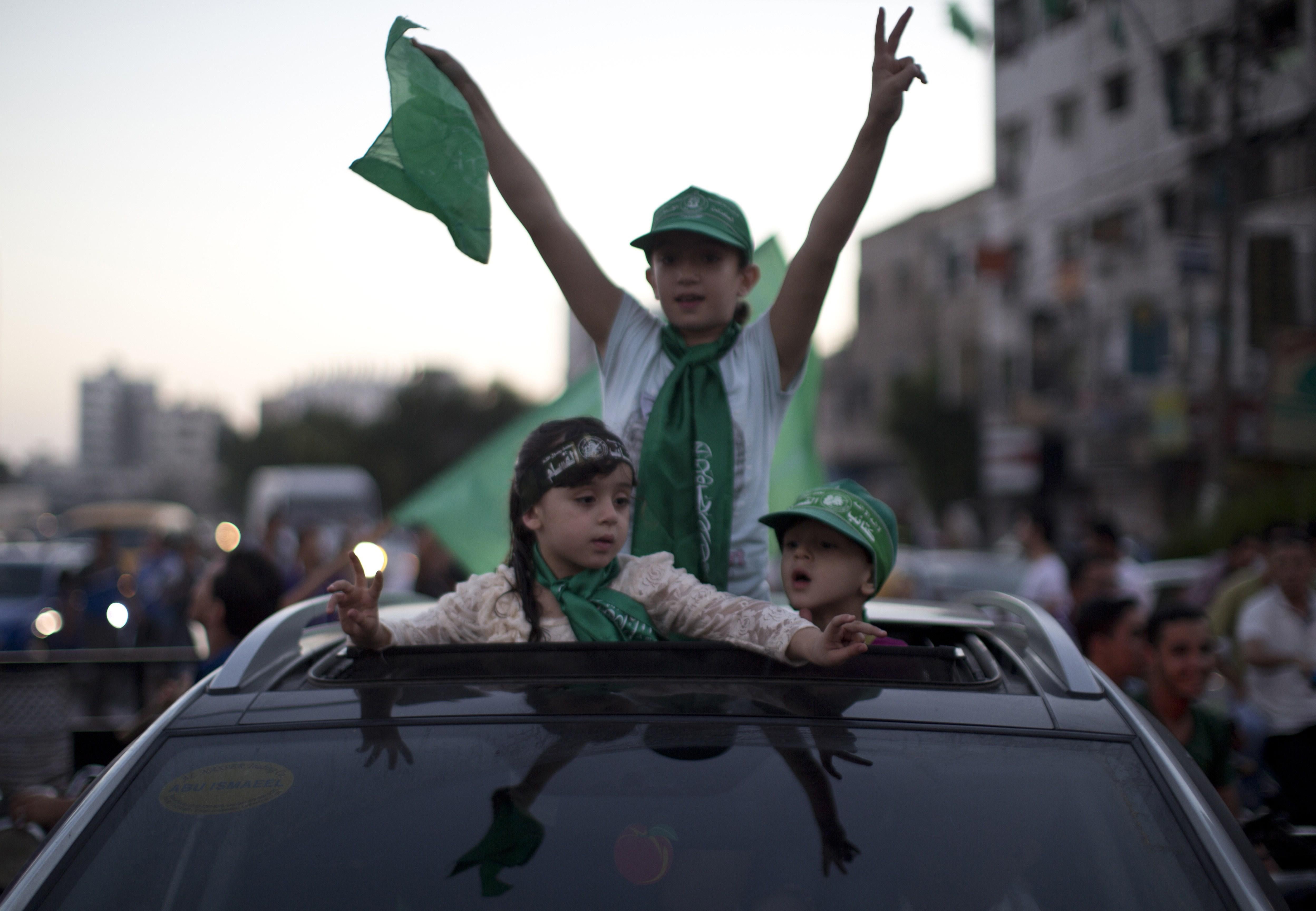The residents of Gaza, at least, seem to believe that the cease-fire that went into effect between Hamas and Israel this afternoon is something different than the many that came before it, as seen in the public celebrations above.
It’s tricky to predict whether such an arrangement will hold. The 72-hour deal that went into effect in early August also had an air of permanence about it, then collapsed a few days later. But at the very least, the intensity of the violence has abated. This isn’t to say that things have been quiet. Just prior to the deal going into effect today, a rocket fired from Gaza killed one person on an Israeli kibbutz near the border. And just yesterday, 16 Palestinians were killed in Israeli airstrikes. It’s sad to say that this represents a de-escalation, but it does.
I don’t think a brief return to fighting is out of the question, but a return to the level of carnage we saw in July seems improbable. It’s likely that Israel will agree to ease but not entirely lift the travel and trade blockade on the territory. This could involve some opening of the checkpoints on the territory’s borders, the construction of a port and expanding of fishing rights, the expansion of humanitarian aid, and talks on prisoner releases.
It’s been obvious for weeks that this is what a final settlement would look like, which raises the question of why it couldn’t be reached earlier. The deal became possible only after Israel had finished its mission of destroying Hamas’ tunnels into Israel and Hamas had fought long enough that it could plausibly sell this to the Palestinian public as a “victory of the resistance.” (The Israeli government has been a lot less enthusiastic about touting this particular cessation of combat, with a spokesman for Prime Minister Benjamin Netanyahu saying only that Israel has accepted “an open-ended cease-fire.”)
The talks will continue and will get messy, and they may be punctuated by renewed bursts of violence, but things are slowly returning to normal. Which is to say that things are returning to an intolerable situation that is unsustainable in the long run for both parties.
There may be some signs that the conflict’s delicate status quo is beginning to shift. The violent protests and heavy-handed Israeli response on the West Bank didn’t quite become the new intifada that many commentators were whispering about, but could be a signal that future eruptions of violence might be more widespread than this one. And Netanyahu no longer appears to be buoyed by high poll ratings, perhaps a sign that the fighting went on a bit too long for the Israeli public, which was initially strongly supportive of Operation Protective Edge.
But even if political winds are slowly shifting, the smart money is still on the cycle of violence continuing.
